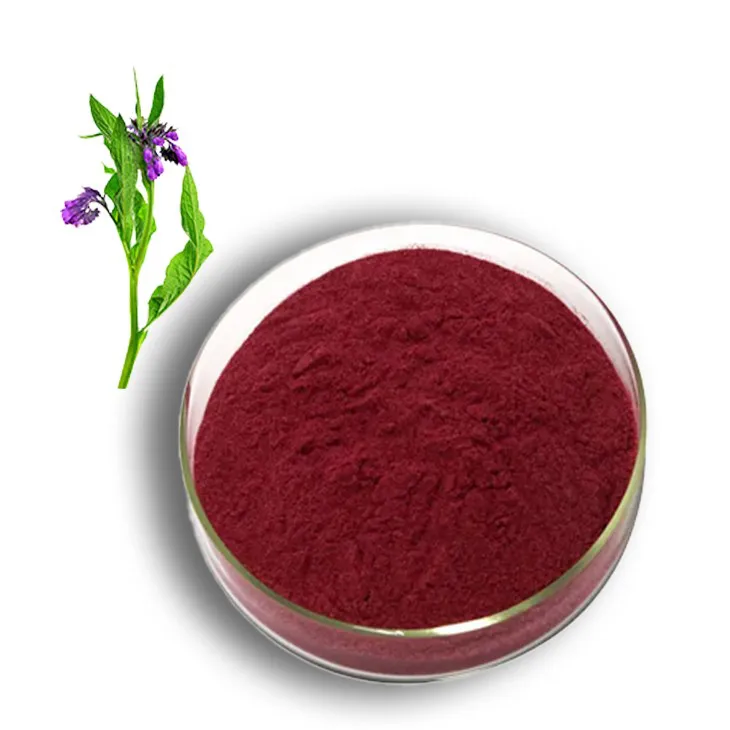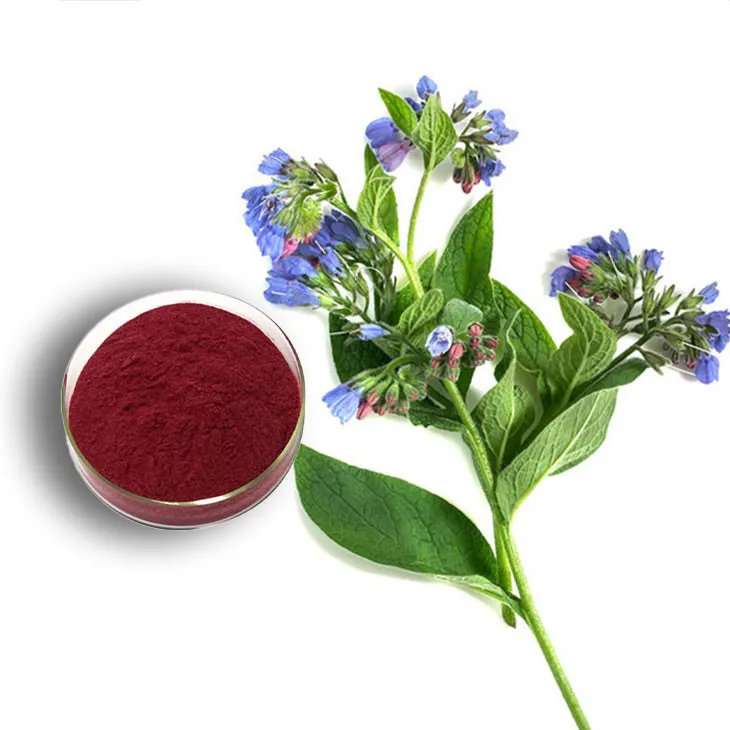- 0086-571-85302990
- sales@greenskybio.com
Charting the Future: Prospects and Challenges for Shikone Extract
2024-07-04

1. Introduction
The Shikone Extract has emerged as a topic of great interest in recent times. It is a substance that has the potential to make a significant impact in various fields, especially in the beauty industry. However, like many emerging substances, it is faced with a complex web of prospects and challenges that need to be carefully examined.

2. The Promise in the Beauty Industry
2.1 Antioxidant Properties
The antioxidant properties of Shikone Extract are one of its most appealing features in the beauty industry. Antioxidants play a crucial role in skincare as they help to combat the damage caused by free radicals. Free radicals are unstable molecules that can damage cells in the skin, leading to premature aging, wrinkles, and other skin problems. Shikone Extract, with its antioxidant capabilities, has the potential to neutralize these free radicals, thus protecting the skin from such damage.
Many existing skincare products on the market already contain antioxidants, but Shikone extract could offer a more potent and effective alternative. For example, compared to common antioxidants like vitamin C and E, preliminary studies suggest that Shikone extract may have a more comprehensive and long - lasting effect on protecting the skin's cells from oxidative stress.
2.2 Potential for New Skincare Product Development
The unique properties of Shikone extract open up a world of possibilities for new skincare product development. It could be incorporated into a wide range of products, such as creams, serums, masks, and lotions.
- Creams: Shikone extract - infused creams could provide deep hydration while also protecting the skin from environmental damage.
- Serums: Serums with Shikone extract might be formulated to target specific skin concerns, like reducing hyperpigmentation or improving skin elasticity.
- Masks: Facial masks containing Shikone extract could offer intensive treatment, rejuvenating the skin and leaving it looking fresh and radiant.
- Lotions: Lotions with this extract could be designed for daily use, providing a lightweight yet effective solution for maintaining healthy skin.

3. Regulatory Hurdles
3.1 Approval Processes
One of the major challenges facing Shikone extract is the complex regulatory environment. In the beauty industry, regulatory bodies around the world have strict requirements for the approval of new ingredients. For example, in the United States, the Food and Drug Administration (FDA) has a set of guidelines that new skincare ingredients must follow.
The approval process often involves extensive testing to ensure the safety and efficacy of the ingredient. This includes tests for toxicity, allergenicity, and long - term effects on the skin. Shikone extract will need to go through these rigorous tests, which can be time - consuming and costly. Moreover, different countries may have different regulatory requirements, adding another layer of complexity for companies looking to market products containing Shikone extract globally.
3.2 Labeling and Claims
Accurate labeling and claims are also crucial aspects of regulatory compliance. Companies using Shikone extract in their products must be careful not to make false or unsubstantiated claims about its benefits. For instance, if a company claims that a product with Shikone extract can "reverse aging," they must have scientific evidence to back up such a bold claim.
Labeling requirements also include providing information about the source of the extract, any potential allergens, and proper usage instructions. Failure to comply with these labeling regulations can result in legal issues and damage to the company's reputation.

4. Quality Control Issues
4.1 Standardization
Ensuring the quality of Shikone extract is a significant challenge. Standardization of the extract is crucial, as the composition and potency of the extract can vary depending on factors such as the source of the raw material and the extraction method used.
For example, if Shikone extract is sourced from different regions or different plant varieties, there may be differences in the levels of active ingredients. This lack of standardization can make it difficult for companies to produce consistent products. It also poses a challenge for regulatory bodies in evaluating the safety and efficacy of the extract, as they need to have a clear understanding of what constitutes a "standard" Shikone extract.
4.2 Contamination Risks
Another quality control issue is the risk of contamination. During the extraction process, there is a possibility of contamination with heavy metals, pesticides, or other harmful substances. These contaminants can have serious consequences for the safety of the final product.
To mitigate this risk, strict quality control measures need to be implemented at every stage of the production process, from sourcing the raw materials to the final packaging of the product. This includes regular testing for contaminants and ensuring that the extraction and manufacturing facilities meet high - quality standards.
5. Market Competition
5.1 Existing Alternatives
The beauty market is highly competitive, and Shikone extract will have to compete with existing alternatives. There are already many well - established skincare ingredients and products on the market that consumers are familiar with.
For example, natural ingredients like aloe vera, green tea, and argan oil have a large following among consumers. These ingredients are known for their skincare benefits and are widely available in various products. To gain a foothold in the market, products containing Shikone extract will need to clearly demonstrate their unique advantages over these existing alternatives.
5.2 New Entrants
In addition to competing with established products, Shikone extract - based products will also face competition from new entrants in the market. The beauty industry is constantly evolving, and new ingredients and products are being introduced regularly.
New companies may develop their own innovative skincare ingredients or formulations that could potentially overshadow Shikone extract. To stay competitive, companies using Shikone extract will need to continuously invest in research and development to improve their products and stay ahead of the competition.
6. Research and Development Needs
6.1 Understanding the Mechanisms
While the antioxidant properties of Shikone extract are promising, more research is needed to fully understand the underlying mechanisms. Scientists need to determine exactly how the extract interacts with skin cells and how it exerts its antioxidant effects.
This knowledge will not only help in validating the claims about the extract's benefits but also in optimizing its use in skincare products. For example, understanding the optimal concentration of Shikone extract for different skin types can lead to more effective product formulations.
6.2 Exploring Additional Benefits
There may be other potential benefits of Shikone extract that have not yet been discovered. Research should be expanded to explore other possible effects on the skin, such as its potential role in promoting wound healing or regulating sebum production.
By uncovering these additional benefits, companies can develop more diverse and targeted products, further increasing the market potential of Shikone extract.
7. Sustainability Considerations
7.1 Sourcing
As the demand for Shikone extract grows, sustainability in sourcing becomes a key consideration. If the raw material for the extract is sourced from plants, it is important to ensure that the harvesting is done in a sustainable manner.
Over - harvesting can lead to depletion of the plant species, which not only has environmental consequences but can also disrupt the supply chain for the extract. Sustainable sourcing practices may include measures such as promoting cultivation rather than wild - harvesting, and ensuring that the harvesting is done in a way that allows the plants to regenerate.
7.2 Environmental Impact
The extraction process itself may also have an environmental impact. For example, if the extraction requires the use of large amounts of solvents or energy, it can contribute to pollution and carbon emissions.
Companies should explore more environmentally friendly extraction methods, such as using green solvents or renewable energy sources, to reduce the environmental footprint of Shikone extract production.
8. Conclusion
The Shikone extract has great potential in the beauty industry, with its antioxidant properties offering new possibilities for skincare product development. However, it is faced with a multitude of challenges, including regulatory hurdles, quality control issues, market competition, and the need for further research and development.
To fully realize the potential of Shikone extract, stakeholders in the industry, including companies, researchers, and regulatory bodies, need to work together. Companies must invest in quality control and research, while regulatory bodies should provide clear and reasonable guidelines for approval and compliance. With careful navigation of these prospects and challenges, Shikone extract could indeed revolutionize the beauty industry in the future.
FAQ:
What are the antioxidant properties of Shikone extract?
The antioxidant properties of Shikone extract likely involve its ability to neutralize free radicals in the body. Free radicals are unstable molecules that can damage cells and contribute to aging and various diseases. Shikone extract may contain compounds that can donate electrons to these free radicals, thus stabilizing them and preventing them from causing harm. However, more research is needed to fully understand the specific chemical mechanisms behind these antioxidant properties.
How could Shikone extract revolutionize skincare products?
Skincare products are constantly seeking ingredients with antioxidant properties as they can help combat the signs of aging, such as wrinkles and fine lines. Shikone extract, with its antioxidant capabilities, could potentially protect the skin from environmental damage like UV radiation and pollution. It may also improve skin elasticity and texture. If incorporated into skincare products, it could offer a new and effective solution for maintaining healthy and youthful - looking skin.
What regulatory hurdles does Shikone extract face?
The regulatory hurdles for Shikone extract may include requirements for safety testing, proper labeling, and compliance with cosmetic or pharmaceutical regulations depending on its intended use. For example, it may need to undergo extensive toxicity testing to ensure it is safe for human use. There may also be regulations regarding the claims that can be made about its benefits on product labels. Additionally, if it is to be used in a medicinal context, it will need to meet even stricter regulatory standards.
What are the quality control issues related to Shikone extract?
Quality control issues for Shikone extract could involve ensuring consistent potency and purity. Variations in the source of the extract, such as differences in the plant variety or growing conditions, may lead to differences in its chemical composition and effectiveness. There is also a need to ensure that the extraction process is standardized to avoid contaminants and to produce a reliable product. Moreover, proper storage and handling to maintain its stability are also important aspects of quality control.
How can the challenges related to Shikone extract be overcome?
To overcome the challenges, more research is needed to better understand the properties of Shikone extract. This can help in formulating appropriate regulatory strategies. For quality control, implementing strict manufacturing and extraction protocols can ensure consistency and purity. Collaboration between industry, research institutions, and regulatory bodies can also play a crucial role. Industry can provide the necessary resources for research and development, while research institutions can offer scientific expertise, and regulatory bodies can ensure that all processes are compliant with the law.
Related literature
- Antioxidants in Skincare: A Comprehensive Review"
- "Regulatory Aspects of New Cosmetic Ingredients"
- "Quality Control in Botanical Extracts for Cosmetic Use"
- ▶ Hesperidin
- ▶ citrus bioflavonoids
- ▶ plant extract
- ▶ lycopene
- ▶ Diosmin
- ▶ Grape seed extract
- ▶ Sea buckthorn Juice Powder
- ▶ Beetroot powder
- ▶ Hops Extract
- ▶ Artichoke Extract
- ▶ Reishi mushroom extract
- ▶ Astaxanthin
- ▶ Green Tea Extract
- ▶ Curcumin Extract
- ▶ Horse Chestnut Extract
- ▶ Other Problems
- ▶ Boswellia Serrata Extract
- ▶ Resveratrol Extract
- ▶ Marigold Extract
- ▶ Grape Leaf Extract
- ▶ blog3
- ▶ blog4
- ▶ blog5
-
Wheat Germ Extract
2024-07-04
-
Saw Palmetto Extract
2024-07-04
-
Alfalfa Meal
2024-07-04
-
Angelica sinensis extract
2024-07-04
-
Maca Extract
2024-07-04
-
Golden Seal Extract
2024-07-04
-
Oat Straw Extract Powder
2024-07-04
-
Citrus Aurantium Extract
2024-07-04
-
Kupilu Extract
2024-07-04
-
Saffron Extract Powder
2024-07-04





















